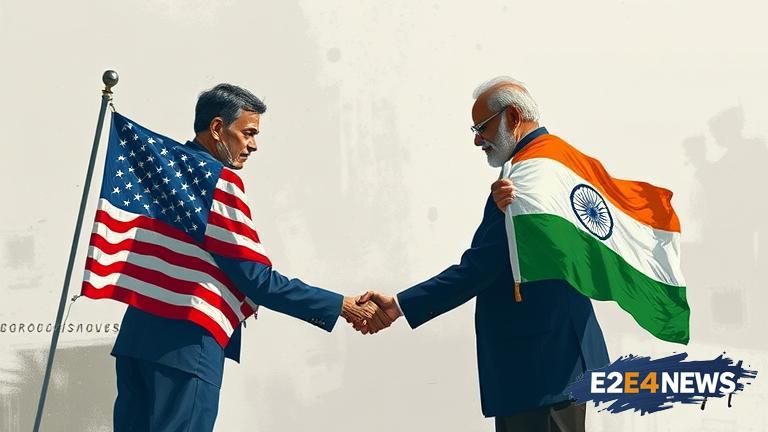The relationship between the United States and India, once hailed as a strong and growing partnership, has begun to show signs of strain. In recent years, the two nations have found themselves at odds over a range of issues, including trade, defense, and diplomacy. Despite the warm rhetoric of their leaders, the underlying tensions have been simmering for some time. The US-India relationship has been a key focus of international attention, with many analysts pointing to the potential for cooperation between the world’s two largest democracies. However, the reality on the ground has been more complex, with both sides struggling to find common ground on a range of issues. One of the main areas of contention has been trade, with the US imposing tariffs on Indian goods and India retaliating with its own tariffs on US products. The dispute has been ongoing for several years, with neither side willing to back down. Another area of tension has been defense, with the US seeking to increase its military sales to India, while India has been looking to diversify its defense relationships and reduce its dependence on Russian arms. The two nations have also disagreed on issues such as climate change, with the US withdrawing from the Paris Agreement and India committing to reduce its carbon emissions. Despite these tensions, there are still areas of cooperation between the two nations, including in the fields of technology and innovation. The US and India have a long history of collaboration in these areas, with many Indian companies having operations in the US and many US companies having operations in India. However, even in these areas, there are signs of strain, with the US imposing restrictions on the export of certain technologies to India and India imposing its own restrictions on the operation of US tech companies in the country. The diplomatic relationship between the two nations has also been under strain, with the US imposing sanctions on several Indian individuals and entities and India retaliating with its own sanctions on US individuals and entities. The situation has been further complicated by the rise of nationalism in both countries, with many politicians and commentators calling for a more assertive approach to international relations. In India, the government of Prime Minister Narendra Modi has been seeking to promote a more nationalist agenda, while in the US, the administration of President Donald Trump has been pursuing a more isolationist approach to international relations. The impact of these trends on the US-India relationship has been significant, with many analysts warning of a potential decline in cooperation between the two nations. Despite these challenges, there are still many areas of potential cooperation between the US and India, including in the fields of counter-terrorism, non-proliferation, and regional security. The two nations have a long history of collaboration in these areas, with many joint exercises and operations having taken place in recent years. However, the future of the relationship remains uncertain, with many analysts warning of a potential decline in cooperation and an increase in tensions between the two nations. The US and India have a complex and multifaceted relationship, with many different factors at play. While there are certainly areas of tension and disagreement, there are also many areas of potential cooperation and collaboration. As the two nations look to the future, it will be important for them to find ways to manage their differences and promote a more cooperative and collaborative approach to international relations. The US-India relationship has the potential to be a key factor in shaping the future of international relations, with many analysts pointing to the potential for cooperation between the world’s two largest democracies. However, the reality on the ground is more complex, with many challenges and obstacles to be overcome. The relationship between the US and India is a critical one, with many different factors at play. While there are certainly areas of tension and disagreement, there are also many areas of potential cooperation and collaboration. As the two nations look to the future, it will be important for them to find ways to manage their differences and promote a more cooperative and collaborative approach to international relations.





